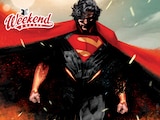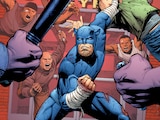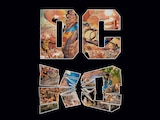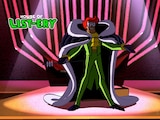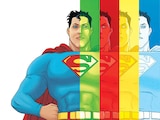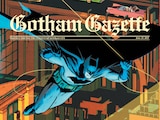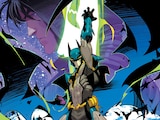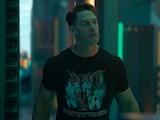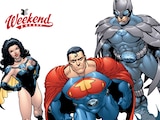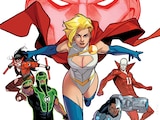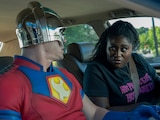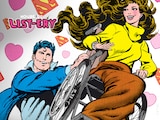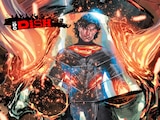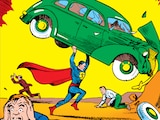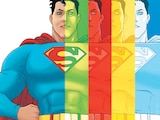We celebrate Pride Month every June, but DC’s commitment to queer representation never really stops. Every year, the DC Universe gives us new characters and perspectives on the vast spectrum of queer identity, each enriched by their own dedicated stories. It’s gotten to the point that you could fill a whole book with queer DC superheroes. In fact, that’s exactly what Jadzia Axelrod, author of Galaxy: The Prettiest Star and the upcoming Hawkgirl series, set out to do with DK Publishing in The DC Book of Pride: A Celebration of DC’s LGBTQIA+ Characters. Now that Pride Month has officially begun and Axelrod’s latest book is in stores, we took the opportunity to speak with her about selecting the over fifty LGBTQIA+ characters that The DC Book of Pride profiles, how she decided who made the cut and what lessons could be learned from the experience.
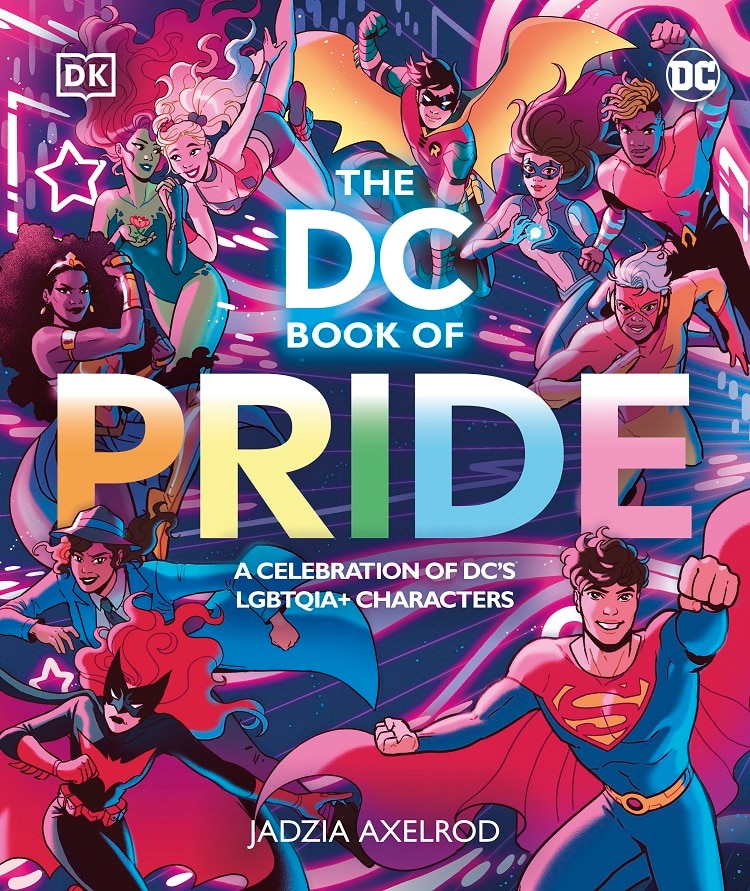
Does it feel a little bit surreal to have written a book with a glossary section where “Green Lantern” is right after “genderqueer?”
Yes! Yes, it does. It’s something that I thought was a good idea, the queer terminology in the glossary, since we were going to have a glossary anyway of superhero terms. And…I was not prepared for the disconnect when you see these entries together. Not that they don’t go together, they clearly do. But I don’t think I’ve ever seen it explicitly done. So often, with these characters, queer themes and gender-related themes are done subtextually and subtly. To have it on the page, “here’s a book that contains Green Lanterns and genderqueer people,” is wild.
Yeah! I mean, historically, media has had to veil their queer characters under coded language and imagery for “plausible deniability” against a bigoted audience, I guess.
Against the Comics Code Authority, yeah.
Many of those queer characters have since been allowed to more overtly express their identities, but others haven’t had that opportunity. When defining your roster of queer characters, what are your criteria for canonically declaring a character queer?
Well, I want to say first off that there are more canonically queer DC characters than are in the book. I want to make that clear. But we only had so much space in the book. The page count was predetermined before I even came on, so how many characters were in there was not up to me. But I did want to focus, in this book, on the characters who’ve had an on-page queer identity. There are a lot of characters who’ve had a lot of subtext, a lot of characters who’ve had intense emotional connections with other characters of the same gender, and I’m not saying that those characters aren’t queer. What I am saying is that for this book, we wanted to prioritize the characters who have explicit LGBTQIA+ identities on-page.
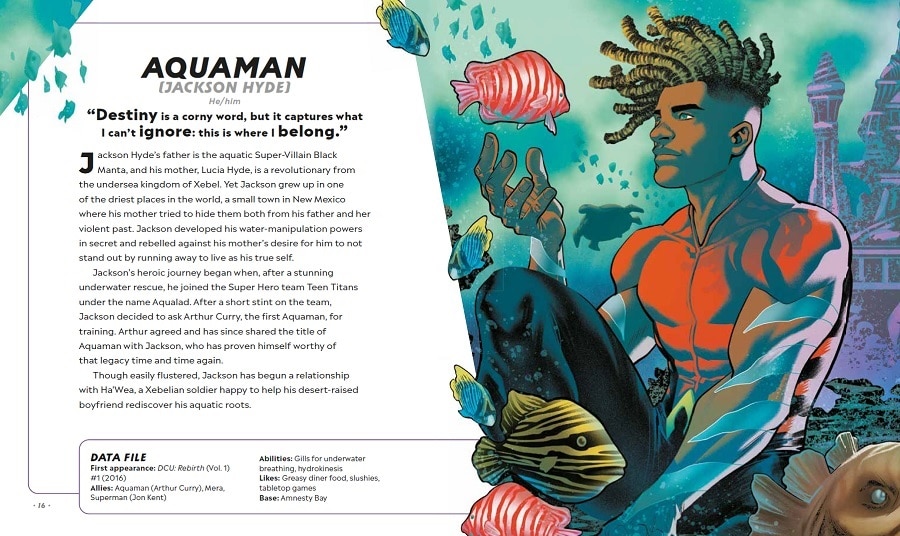
The thing I harp on, over and over again, is that a character is canonically queer if they either say so, or they engage in on-screen queer actions. Kisses count—they don’t have to have riotous amounts of queer sex on-page. Also, expressions of queer desire. That counts too.
Anything that you can hold up and say, “This is real.” A longing look on a panel, while something, was not enough to include in this collection, only because we had limited space. I wanted to make sure it was the characters who had some kind of queer identity that they expressed.
In researching this book, you must have gotten to know the historical arc of queer representation quite well. How has representation changed?
I mean, they’ve included queer characters since almost the beginning. The question is how explicit they got to be. You can read those old Wonder Woman comics and see there’s a lot of queerness going on. But no one ever comes out and says, “Hi, I’m a lesbian.”
So, what’s been fascinating, and this is something that happened as the Authority of the Comics Code became less ironclad until even relatively recently, is to watch how these characters have come out in different ways. We have a lot of nudge-nudge wink-wink with certain characters. But it’s been really cool to see characters be out and be proud like Batwoman, and Apollo and Midnighter, and Harley Quinn. Characters who do not apologize for their sexuality, and are not seen as unusual or detrimental. It is merely a part of who they are.
So often in the past, queer characters have had to be tragic, because they are gay. “Oh, well, you’re gay, so you must also have to suffer, or in some cases, die. Because that’s your role.” And it’s nice that we have characters that get to live and enjoy their queerness, and get to be happy being queer people.
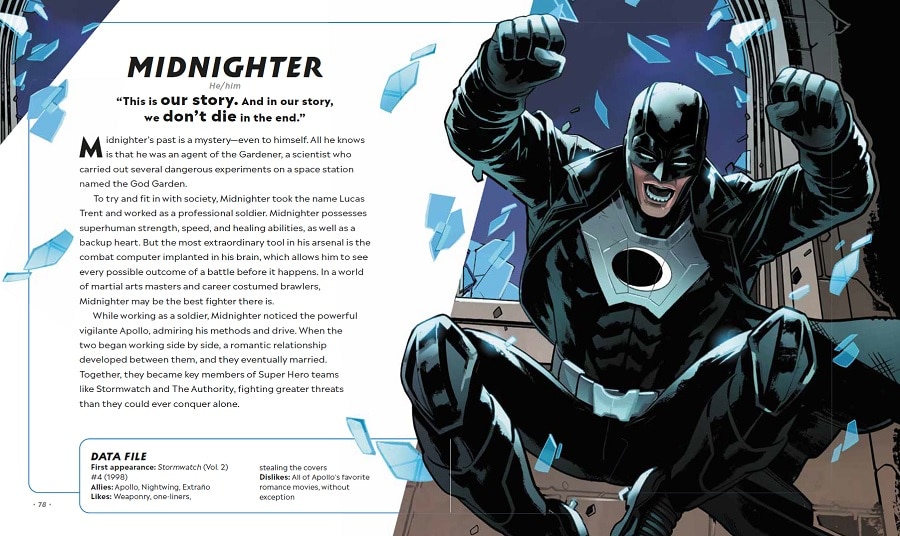
What makes the queer characters of the DC Universe special, apart from the fact that they’re queer superheroes?
Well, they’re such a broad range of characters. That’s what really struck me in researching this book and putting it together. There are so many different people from so many different walks of life. It’s a very diverse collection of young characters…like, it’s still very white, but there’s plenty of characters of color, which is really nice to see. It’s a nice collection of different takes on what it means to be queer, and all the very different ways to be queer. Thunder is not like Batwoman. Aruna is not like Galaxy. These characters are all different in their own ways, and it’s really neat to see that all together.
It really demonstrates there’s no correct way to be queer.
Absolutely.
One of the many characters you profiled in this book is Galaxy, a character you created for Galaxy: The Prettiest Star. I’ve read a lot of Who’s Who books, as I imagine you have as well. One of my favorite things about them is that sometimes, when creators get to write their own character bios, they’ll sneak in a few facts that haven’t made it into the comics themselves. Is there anything special you can tell us about Galaxy that’s not in print?
I don’t think there’s anything in the entry that’s not already been in comics. I did put in that she and Dreamer are friends, which is something that Nicole (Maines, author of upcoming graphic novel Bad Dream: A Dreamer Story and portrayer of Dreamer herself on Supergirl) and I have been working on for a while. That’s already canon, because it’s been in Lazarus Planet. There was a picture of the two of them together, being besties. So, they have a relationship and a friendship that is very special. It’s referenced a bit in Hawkgirl, which Galaxy is appearing in…but I don’t want to say more than that.
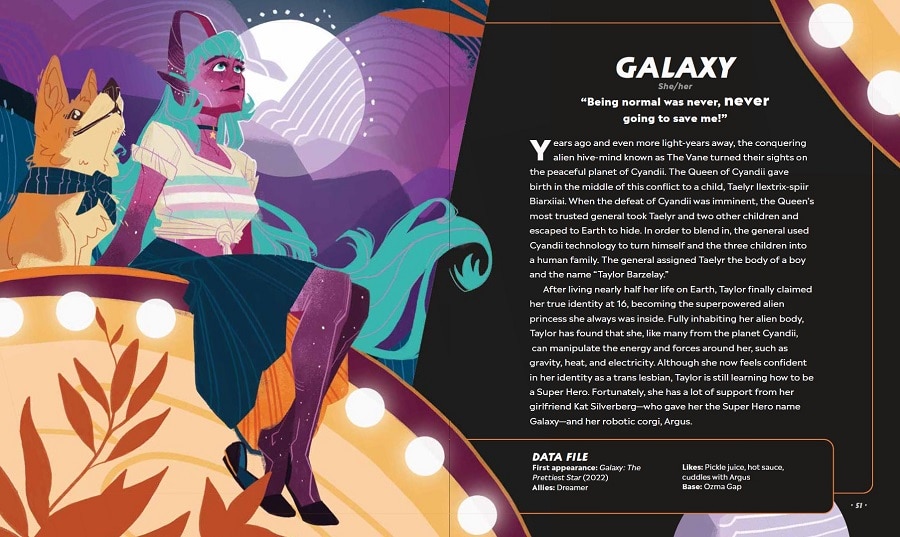
To me, The DC Book of Pride feels like a guest book to the coolest Pride event in the DC Universe. So, if you were there, who would you most want to hang out with? Who’s running the show? Who’s handing out the literature, and organizing political action? And who needed to go home two drinks ago?
Let’s see. I think Batwoman is organizing, for sure. She’s not the one you want to hang out with, because she’s the one making sure everybody’s in their right place. I’d want to hang out with the younger characters, because they’re more fun. Definitely want to hang out with Galaxy, want to hang out with Dreamer… I think Bunker has probably taken on a little bit more responsibility. He’s probably organizing the parade. And then, of course, you want to hang out with the queer elders too, like Extraño and Tasmanian Devil, and listen to all their great stories.
Who would I not want to hang out with, in this group…? Constantine, probably. He’s going to end up drinking and being miserable and thinking about old boyfriends and girlfriends. I don’t want that energy at Pride!
One last question. Galaxy: The Prettiest Star begins with a dedication that’s still very haunting: “For the girl that needed this book ages ago, and couldn’t find it.” Who do you hope reads The DC Book of Pride, and what do you hope they get out of it?
It’s written for young readers, which is wild to me—that we’re talking about gay superheroes, and also gay superheroes for younger readers. That’s something that’s always been seen as “adult stuff.” And so, it’s neat to have this book for younger readers.
So, I do hope younger readers who know queer people, who have queer parents, who are exploring that part of their identity, either in a gender way or sexuality way, I hope they find this book and see people that remind them of themselves in the best way possible. To pick their own personal heroes. I hope it opens up a world to them.
I know I was surprised that there were so many queer DC characters—we could do a couple more volumes—and I am someone who lives and breathes this stuff. I am a “DC expert,” as it says on the back of the book, and I was discovering characters that I didn’t know were queer. And so, to have this book there as a reference for kids to be like, “This character is like me,” in whatever way, is really great. I hope they are able to carry that with them, and I hope that gives them a strength, and a power, and a feeling of community that they may not have had before.
The DC Book of Pride: A Celebration of DC’s LGBTQIA+ Characters by Jadzia Axelrod is now available in bookstores, libraries and online retailers in print or as an e-book.

